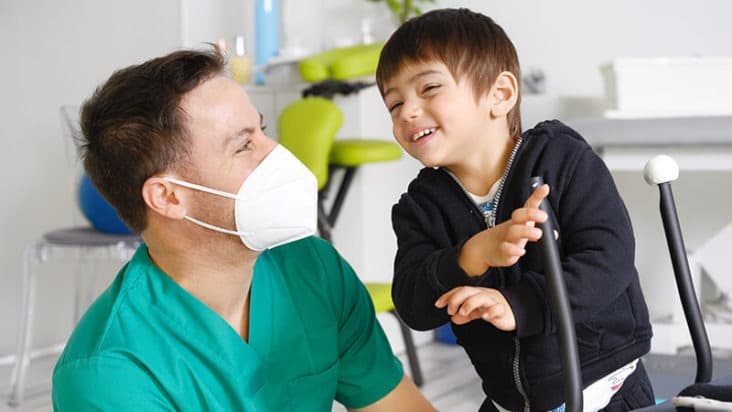Hassa, 3 years of age, has been diagnosed with “spastic diplegic cerebral palsy”. She is the third child of first degree consanguineous parents, born by emergency caesarian section due fetal distress at 28 gestational age.
Symptoms and History :
Hassa’s Apgar scores were 4, 7 and 8 at 1, 5 and 10 minutes respectively and she developed acute respiratory distress, intraventricular hemorrhage, grade 4, and requiring admission to NICU for 2.5 months. Hassa’s motor milestones were delayed as she sat at the age of 2 years and started to speak at the age 2.6 years.
Cerebral palsy (CP) is a group of disorders that affect a child’s ability to move and maintain balance and posture. “Cerebral” means having to do with the brain. “Palsy” means weakness or problems with using the muscles. CP is caused by abnormal brain development or damage to the developing brain that affects a child’s ability to control his or her muscles. In spastic diplegic―, muscle stiffness is mainly in the legs, with the arms less affected or not affected at all. Children with spastic diplegic CP might have difficulty walking because tight hip and leg muscles cause their legs to pull together, turn inward, and cross at the knees (also known as scissoring).
Diagnosis and Treatment
Hassa was examined by Dr. Imad Yassin, consultant pediatrician and pediatric neurologist at the Pediatric Neurology Clinic at Kids heart Medical center and found that Hassa has severe spasticity (muscular hypertonicity) of her lower limbs. Dr. Imad Yassin, decided to start a program of treatment combining “Intensive Physiotherapy” with administering BOTOX® (onabotulinumtoxin A) intramuscular injection. Dr. Imad Yassin explained to Hassa’s parents that muscle spasticity occurs when muscles contract too much and do not relax. This can make walking and daily activities such as dressing difficult and possibly painful.
When BOTOX® is injected into the muscle, it blocks the effects of a chemical messenger called acetylcholine that is released from the nerves to make the muscle contract. BOTOX® helps the muscle to relax, which should make daily activities easier and less painful.
The effects of an injection last for 3-4 months. The treatment may be repeated on one or more occasions, and the decision to do this will depend upon whether the first treatment was beneficial, and whether or not the benefits have been long-lasting. Injections are usually done at a hospital clinic.
Dr. Imad Yassin talked to Hassa’s parents about which muscles are tight or in spasm and identify them, and discuss how many injections are needed.
The injection is done quickly but may cause some pain as it goes into the muscle.
Dr. Imad Yassin discussed with Hassa’s family about possible side effects, stating that stating that “if your child has new swallowing difficulties, breathing problems or a chest infection soon after a BOTOX® injection, and asked the family to contact him straight away or take your child to hospital”. Dr. Imad Yassin told Hassa’s family: “Your child may rarely have flu-like symptoms a few days after the injections (headache, aches and pains, fever [temperature above 38°C]), diarrhea, may be sick (vomit) or feel drowsy. Dr. Imad Yassin asked Hassa’s family if they are concerned, to contact him immediately. Dr. Imad Yassin also told the family that Hassa may get itching, a rash, or pain or bruising at the site of the injection, which usually disappear after few hours.
After 4 session of treatment (about one year) with BOTOX® injection combined with INTENSIVE PHYSIOTHERAPY, Hassa started to walk independently and used her hands freely. Hassa and her family were happy with results.

